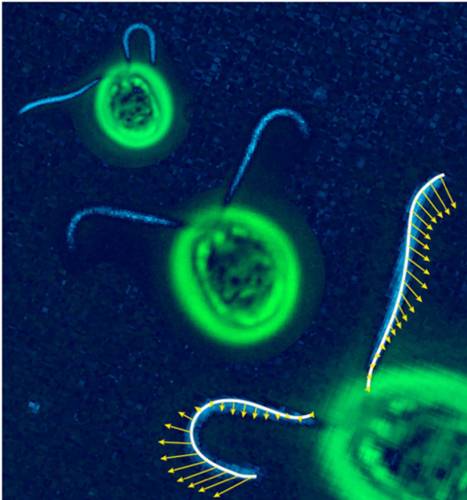
The green alga is a microscopic breaststroke swimmer. The movements of its two flagella are synchronised by mechanical forces: its swimming strokes slow down or accelerate, depending on how the cell rocks while swimming.
The eukaryotic flagellum is a best-seller of nature: These slender cell appendages propel sperm and many other microswimmers, including disease-causing protists. In mammalian airways or the oviduct, collections of flagella beat in synchrony to pump fluids efficiently. Flagellar synchronization was proposed to rely on mechanical feedback by hydrodynamic forces, but the details are not well understood.
Scientists at the MPI-PKS and the MPI-CBG used theory and experiment to elucidate a mechanism of synchronization in the model organism Chlamydomonas, a green algal cell that swims with two flagella like a breaststroke swimmer. The analysis shows how synchronization arises by a coupling of swimming and flagellar beating and characterizes an exemplary force–velocity relationship of the flagellar beat.
Veikko F. Geyer, Frank Jülicher, Jonathon Howard, Benjamin M. Friedrich:
Cell-body rocking is a dominant mechanism for flagellar synchronization in a swimming alga.
PNAS, 21 October 2013